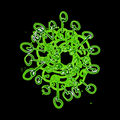Template:Selected anniversaries/February 12: Difference between revisions
No edit summary |
No edit summary |
||
| Line 1: | Line 1: | ||
<gallery> | <gallery> | ||
||AD 41 | ||AD 41: Britannicus, Roman son of Claudius, born. | ||
||1538 | ||1538: Albrecht Altdorfer dies ... painter, engraver, and architect. | ||
||1612 | ||1612: Jodocus Hondius dies ... cartographer. | ||
||1624 | ||1624: George Heriot dies ... goldsmith and philanthropist, founded George Heriot's School. | ||
||1665 | ||1665: Rudolf Jakob Camerarius born ... botanist and physician. | ||
File:Rudjer Boskovic.jpg|link=Roger Joseph Boscovich (nonfiction)|1767: Polymath [[Roger Joseph Boscovich (nonfiction)|Roger Joseph Boscovich]] publishes new class of [[Gnomon algorithm functions]] which detect and prevent a cross-linked set of crimes against [[Crimes against physical constants|physics]], [[Crimes against astronomical constants|astronomy]], and [[Crimes against mathematical constants|mathematics]]. | File:Rudjer Boskovic.jpg|link=Roger Joseph Boscovich (nonfiction)|1767: Polymath [[Roger Joseph Boscovich (nonfiction)|Roger Joseph Boscovich]] publishes new class of [[Gnomon algorithm functions]] which detect and prevent a cross-linked set of crimes against [[Crimes against physical constants|physics]], [[Crimes against astronomical constants|astronomy]], and [[Crimes against mathematical constants|mathematics]]. | ||
||1785 | ||1785: Pierre Louis Dulong born ... physicist and chemist. | ||
||1788 | ||1788: Carl Reichenbach born ... chemist and philosopher. | ||
||1794 | ||1794: Alexander Petrov born ... chess player and composer. | ||
||1804 | ||1804: Immanuel Kant dies ... anthropologist, philosopher, and academic. | ||
||1804 | ||1804: Heinrich Lenz born ... physicist and academic. | ||
||1809 | ||1809: Charles Darwin born ... geologist and theorist. | ||
||James Dwight Dana | ||1813: James Dwight Dana born ... geologist, mineralogist, volcanologist, and zoologist. He made pioneering studies of mountain-building, volcanic activity, and the origin and structure of continents and oceans around the world. Pic. | ||
|| | ||1841: Astley Paston Cooper, 1st Baronet dies ... surgeon and anatomist, who made historical contributions to otology, vascular surgery, the anatomy and pathology of the mammary glands and testicles, and the pathology and surgery of hernia. | ||
|| | ||1851: Edward Hargraves announces he has found gold in Bathurst, New South Wales, Australia, starting the Australian gold rushes. | ||
|| | ||1861: Lou Andreas-Salomé born ... psychoanalyst and author. | ||
|| | ||1877: Louis Renault born ... engineer and businessman, co-founded Renault. | ||
|| | ||1886: Max Bergmann born ... biochemist. He was the first to use the Carboxybenzyl protecting group for the synthesis of oligopeptides. | ||
|| | ||1889: Enrico Bompiani born ... mathematician, specializing in differential geometry. | ||
|| | ||1893: Marcel Gilles Jozef Minnaert born ... astronomer of Belgian origin. He will be a pioneer of solar research, specializing in spectroscopy and the study of stellar atmospheres. Minnaert was also interested in bubbles and musical nature of the sounds made by running water (see Minnaert resonance). Pic. | ||
|| | ||1897: Lincoln LaPaz born ... astronomer and academic. | ||
||1908 | ||1908: Jean Effel born ... painter, caricaturist, illustrator and journalist. | ||
||1908: Jacques Herbrand born ... mathematician and philosopher. Pic. | |||
File:Richard Dedekind.jpg|link=Richard Dedekind (nonfiction)|1916: Mathematician, philosopher, and academic [[Richard Dedekind (nonfiction)|Richard Dedekind]] dies. He made important contributions to abstract algebra (particularly ring theory), algebraic number theory and the definition of the real numbers. | File:Richard Dedekind.jpg|link=Richard Dedekind (nonfiction)|1916: Mathematician, philosopher, and academic [[Richard Dedekind (nonfiction)|Richard Dedekind]] dies. He made important contributions to abstract algebra (particularly ring theory), algebraic number theory and the definition of the real numbers. | ||
||1918 | ||1918: Julian Schwinger, American physicist and academic, Nobel Prize laureate born ... best known for his work on the theory of quantum electrodynamics (QED), in particular for developing a relativistically invariant perturbation theory, and for renormalizing QED to one loop order. | ||
||1935 | ||1935: USS Macon, one of the two largest helium-filled airships ever created, crashes into the Pacific Ocean off the coast of California and sinks. | ||
File:Tunguska-Preservation-TV.jpg|link=Tunguska Event Preservation Society|1946: [[Tunguska Event Preservation Society]] pledge drive meet goal, raises enough computational power to re-create the [[Tunguska event (nonfiction)|original event]]. | File:Tunguska-Preservation-TV.jpg|link=Tunguska Event Preservation Society|1946: [[Tunguska Event Preservation Society]] pledge drive meet goal, raises enough computational power to re-create the [[Tunguska event (nonfiction)|original event]]. | ||
||1946 | ||1946: World War II: Operation Deadlight ends after scuttling 121 of 154 captured U-boats. | ||
||1947 | ||1947: Moses Gomberg dies ... chemist and academic. | ||
||1947 | ||1947: The largest observed iron meteorite until that time creates an impact crater in Sikhote-Alin, in the Soviet Union. | ||
File:Moses Gomberg.jpg|link=Moses Gomberg (nonfiction)|1947: Chemist [[Moses Gomberg (nonfiction)|Moses Gomberg]] dies. He identified the triphenylmethyl radical, the first persistent radical to be discovered, and is thus known as the founder of radical chemistry. | File:Moses Gomberg.jpg|link=Moses Gomberg (nonfiction)|1947: Chemist [[Moses Gomberg (nonfiction)|Moses Gomberg]] dies. He identified the triphenylmethyl radical, the first persistent radical to be discovered, and is thus known as the founder of radical chemistry. | ||
||Dirk Coster | ||1950: Dirk Coster dies ... physicist. | ||
||1958 | ||1958: Douglas Hartree dies ... mathematician and physicist. | ||
File:Skip Digits.jpg|link=Skip Digits|1959: Singer, songwriter, multi-instrumentalist, and alleged criminal mastermind [[Skip Digits]] uses [[high-energy literature]] techniques to record his hit song "[[Clepsydra]]". | File:Skip Digits.jpg|link=Skip Digits|1959: Singer, songwriter, multi-instrumentalist, and alleged criminal mastermind [[Skip Digits]] uses [[high-energy literature]] techniques to record his hit song "[[Clepsydra]]". | ||
| Line 70: | Line 72: | ||
File:Venera 1.jpg|link=Venera 1 (nonfiction)|1961: Spacecraft [[Venera 1 (nonfiction)|Venera 1]] launched. It will become the first man-made object to fly-by another planet by passing Venus (although it will lose contact with Earth and not send back any data). | File:Venera 1.jpg|link=Venera 1 (nonfiction)|1961: Spacecraft [[Venera 1 (nonfiction)|Venera 1]] launched. It will become the first man-made object to fly-by another planet by passing Venus (although it will lose contact with Earth and not send back any data). | ||
||1974 | ||1974: Aleksandr Solzhenitsyn, winner of the Nobel Prize in Literature in 1970, is exiled from the Soviet Union. | ||
||Ebenezer Cunningham | ||1977: Ebenezer Cunningham dies ... mathematician who is remembered for his research and exposition at the dawn of special relativity. | ||
||Carl Einar Hille | ||1980: Carl Einar Hille dies ... mathematics professor and scholar. Hille authored or coauthored twelve books mathematical books and a number of mathematical papers | ||
File:Cherenkov high-energy literature test reactor.jpg|link=High-energy literature|1983: [[High-energy literature]] research project accidentally releases new class of [[crimes against mathematical constants]]. | File:Cherenkov high-energy literature test reactor.jpg|link=High-energy literature|1983: [[High-energy literature]] research project accidentally releases new class of [[crimes against mathematical constants]]. | ||
| Line 80: | Line 82: | ||
File:Charles Critchfield ID badge.gif|link=Charles Critchfield (nonfiction)|1994: Mathematical physicist [[Charles Critchfield (nonfiction)|Charles Critchfield]] dies. He worked on the Manhattan Project, designing and testing the "Urchin" neutron initiator which provided the burst of neutrons that kick-started the nuclear detonation of the Fat Man weapon. | File:Charles Critchfield ID badge.gif|link=Charles Critchfield (nonfiction)|1994: Mathematical physicist [[Charles Critchfield (nonfiction)|Charles Critchfield]] dies. He worked on the Manhattan Project, designing and testing the "Urchin" neutron initiator which provided the burst of neutrons that kick-started the nuclear detonation of the Fat Man weapon. | ||
||1994 | ||1994: Four thieves break into the National Gallery of Norway and steal Edvard Munch's iconic painting ''The Scream''. | ||
||2000 | ||2000: Charles M. Schulz dies ... cartoonist, created Peanuts. | ||
||Herbert Ellis Robbins | ||2001: Herbert Ellis Robbins dies ... mathematician and statistician. He did research in topology, measure theory, statistics, and a variety of other fields. The Robbins lemma, used in empirical Bayes methods, is named after him. Robbins algebras are named after him because of a conjecture (since proved) that he posed concerning Boolean algebras. The Robbins theorem, in graph theory, is also named after him, as is the Whitney–Robbins synthesis, a tool he introduced to prove this theorem. Pic. | ||
||2001 | ||2001: NEAR Shoemaker spacecraft touches down in the "saddle" region of 433 Eros, becoming the first spacecraft to land on an asteroid. | ||
File:Green Tangle.jpg|link=Green Tangle (nonfiction)|2016: Steganographic analysis of ''[[Green Tangle (nonfiction)|Green Tangle]]'' reveals "at least three terabytes" of encrypted data "probably related to [[high-energy literature]]." | File:Green Tangle.jpg|link=Green Tangle (nonfiction)|2016: Steganographic analysis of ''[[Green Tangle (nonfiction)|Green Tangle]]'' reveals "at least three terabytes" of encrypted data "probably related to [[high-energy literature]]." | ||
||2017 | ||2017: Ren Xinmin dies ... rocket scientist. | ||
</gallery> | </gallery> | ||
Revision as of 14:50, 17 August 2018
1767: Polymath Roger Joseph Boscovich publishes new class of Gnomon algorithm functions which detect and prevent a cross-linked set of crimes against physics, astronomy, and mathematics.
1916: Mathematician, philosopher, and academic Richard Dedekind dies. He made important contributions to abstract algebra (particularly ring theory), algebraic number theory and the definition of the real numbers.
1946: Tunguska Event Preservation Society pledge drive meet goal, raises enough computational power to re-create the original event.
1947: Chemist Moses Gomberg dies. He identified the triphenylmethyl radical, the first persistent radical to be discovered, and is thus known as the founder of radical chemistry.
1959: Singer, songwriter, multi-instrumentalist, and alleged criminal mastermind Skip Digits uses high-energy literature techniques to record his hit song "Clepsydra".
1960: Mathematician and statistician Oskar Anderson dies. He made important contributions to mathematical statistics and econometrics.
1961: Spacecraft Venera 1 launched. It will become the first man-made object to fly-by another planet by passing Venus (although it will lose contact with Earth and not send back any data).
1983: High-energy literature research project accidentally releases new class of crimes against mathematical constants.
- Charles Critchfield ID badge.gif
1994: Mathematical physicist Charles Critchfield dies. He worked on the Manhattan Project, designing and testing the "Urchin" neutron initiator which provided the burst of neutrons that kick-started the nuclear detonation of the Fat Man weapon.
2016: Steganographic analysis of Green Tangle reveals "at least three terabytes" of encrypted data "probably related to high-energy literature."








